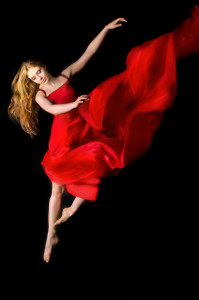 The arts are sometimes divided into spatial arts and temporal arts.
The arts are sometimes divided into spatial arts and temporal arts.
The visual arts – painting, sculpture, and architecture – are space arts. They exist as material objects that occupy two- or three-dimensional space. They are more or less enduring. And much of their appeal has to do with how they portray and/or create shapes of different kinds.
The temporal art forms – music, dance, theatre, and film – have a beginning and an ending. They occupy an instantaneous present and must be recreated afresh. A musical melody depends, not only on the notes chosen, but also on the order in which the notes are sounded. Similarly, all temporal arts rely upon a particular sequence — of sounds or actions — to convey whatever the artist intends to express.
This division of art forms is an oversimplification – for there are temporal dimensions in the spatial arts and spatial dimensions in the temporal arts. This is quite clear in dance. The dancer’s actions follow a sequential order while traversing space and creating a series of temporary shapes. Dance is an art that exists in both space and time.
Laban appreciated the dual nature of dance, recognizing its architectural nature as well as its musical aspects. The framework he created for recording dance had to address both aspects. Thus, Choreutic theory illuminates the dancer’s space. Eukinetics addresses temporal aspects such as rhythm, phrasing, and dynamics.
